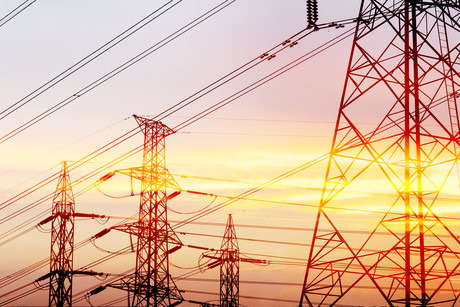Always check for powerlines before starting work

A series of serious incidents involving overhead powerlines has prompted warnings for greater safety around heavy vehicles and machinery.
Employers and contractors are being urged to always check for powerlines before work commences.
Late last month a driver escaped without injury after the tray of his tip truck came into contact with overhead powerlines while delivering fertiliser on a farm at Moglonemby, near Euroa. The truck was badly damaged by the subsequent fire.
Earlier in February, a 55-year-old truck driver was electrocuted in a similar incident at Kergunyah, near Albury.
WorkSafe Victoria is also aware of seven serious incidents involving overhead powerlines on construction sites across Victoria since mid-November.
These incidents have involved excavators, concrete pumps, cranes and a tip truck, all making contact with live overhead powerlines.
WorkSafe Health and Safety Director Marnie Williams said anyone in control of a workplace must ensure that workers, including contractors, were not put at risk from powerlines when carrying out tasks as directed.
“No-one sets out to hit powerlines but they can sometimes be difficult to see,” Williams said.
“Whether you are an employer in charge of workers on a construction site or a farmer directing a contractor, you are responsible for ensuring that workers operating heavy machinery are aware of powerlines in the area before they commence the task.”
Paul Fearon, Director of Energy Safety at Energy Safe Victoria, said nearly all deaths and near misses involving large machinery and powerlines were avoidable with the proper precautions.
“This spike has echoes of 2006, when three people were tragically killed in similar but separate incidents,” Fearon said.
“Since then, ESV has been urging people to Look Up and Live, that is, check for powerlines before work begins.”
To avoid striking powerlines, employers and contractors using trucks and other mobile plant should:
- identify all powerlines on-site and at site entrance or exit points;
- monitor weather conditions closely — powerlines can sag in extreme heat and sway in strong winds;
- be aware that powerlines are more difficult to see at dawn and dusk;
- comply with the No Go Zone rules when operating mobile plant around powerlines;
- designate travel paths, loading and unloading areas well away from powerlines;
- install warning signs or other visual indicators on each side of the powerline to warn operators and drivers;
- consider the type and height of heavy vehicles, plant and machinery and if it can safely operate near the powerlines;
- induct drivers and operators in the risks of powerlines on site, and the controls in place to prevent hitting the powerlines.
For more information, see worksafe.vic.gov.au or http://www.esv.vic.gov.au/campaigns/look-up-and-live-no-go-zones/.
Overhead powerline warning signs are available from Energy Safe Victoria here.
Electrician fined after apprentice receives electric shock
An electrical worker has been fined for failing to supervise an apprentice, after the apprentice...
Work health and safety data launched for electricians
Safe Work Australia has released WHS data for electricians to help illustrate the nature of risks...
Three high risk work licences suspended after safety breaches
Three workers have had their licences suspended for up to 12 months after a series of safety...










